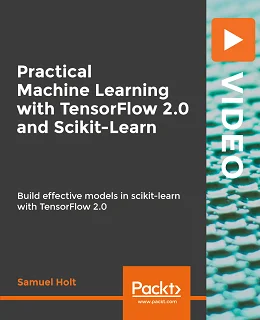Practical Machine Learning with TensorFlow 2.0 and Scikit-Learn [Video]

Practical Machine Learning with TensorFlow 2.0 and Scikit-Learn [Video]
English | MP4 | AVC 1920×1080 | AAC 48KHz 2ch | 10h 28m | 2.33 GB
eLearning | Skill level: All Levels
Practical Machine Learning with TensorFlow 2.0 and Scikit-Learn [Video]: Get to grips with TensorFlow 2.0 and scikit-learn
Have you been looking for a course that teaches you effective machine learning in scikit-learn and TensorFlow 2.0? Or have you always wanted an efficient and skilled working knowledge of how to solve problems that can’t be explicitly programmed through the latest machine learning techniques?
If you’re familiar with pandas and NumPy, this course will give you up-to-date and detailed knowledge of all practical machine learning methods, which you can use to tackle most tasks that cannot easily be explicitly programmed; you’ll also be able to use algorithms that learn and make predictions or decisions based on data.
The theory will be underpinned with plenty of practical examples, and code example walk-throughs in Jupyter notebooks. The course aims to make you highly efficient at constructing algorithms and models that perform with the highest possible accuracy based on the success output or hypothesis you’ve defined for a given task.
- Fundamentals of machine learning (and introducing the benefits of scikit-learn)
- Practical implementation with comprehensive examples of canonical machine learning, and supervised and unsupervised machine learning in scikit-learn
- How to identify a problem, select the right model, and optimize it to get the best desired outcome: insights into data
- TensorFlow 2.0 for deep learning with neural networks
- Deep learning and image-classification examples, and time series predictive model examples
- Reinforcement learning, and how to implement various types with examples
- Effectively use scikit-learn and TensorFlow in your production system, including framing a task in each task example
By the end of this course, you will be able to comfortably solve an array of industry-based machine learning problems by training, optimizing, and deploying models into production. Being able to do this effectively will allow you to create successful prediction and decisions for the task in hand (for example, creating an algorithm to read a labeled dataset of handwritten digits).